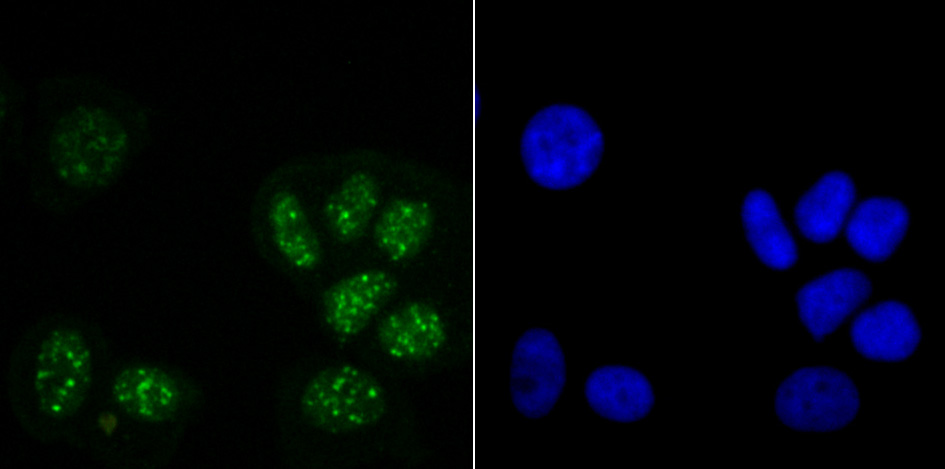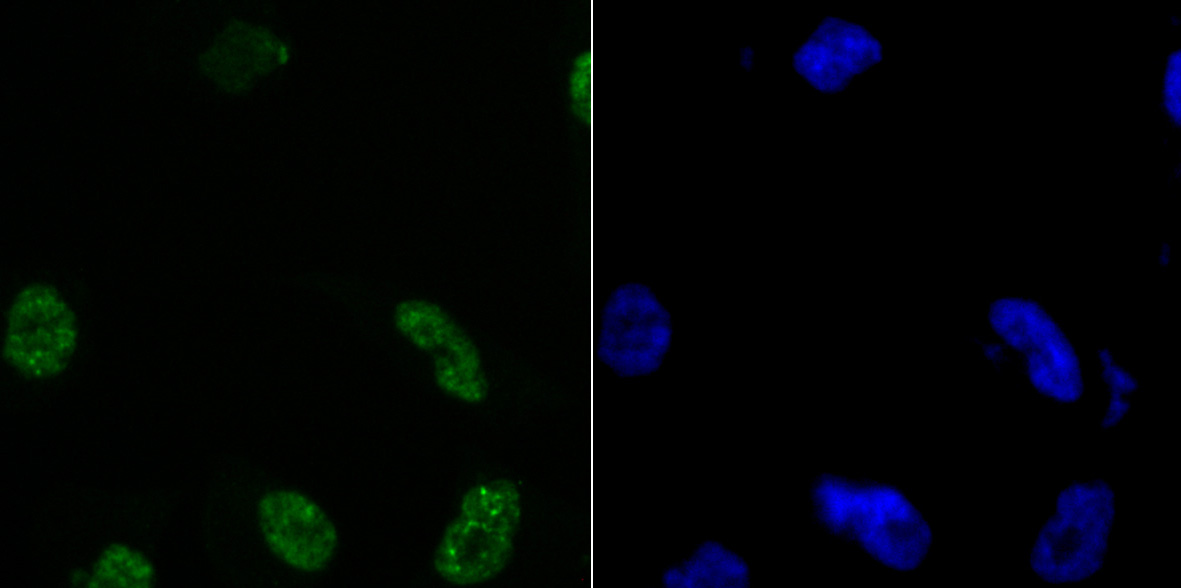Product Detail
Product NameHistone H3.1 Antibody
Host SpeciesRabbit
ClonalityPolyclonal
PurificationPeptide affinity purified.
ApplicationsWB,ICC,IHC
Species ReactivityHu, Ms
Immunogen DescSynthetic peptide of N-terminal human Histone H3.1.
ConjugateUnconjugated
Accession NoSwiss-Prot#:P68431
Uniprot
P68431
Gene ID
8350;8351;8352;8353;8354;8355;8356;8357;8358;8968;
Calculated MW15.4 kDa
Formulation1*TBS (pH7.4), 0.5%BSA, 50%Glycerol. Preservative: 0.05% Sodium Azide.
StorageStore at -20˚C
Application Details
WB: 1:500-1:1,000
IHC: 1:50-1:200
ICC: 1:50-1:200
Western blot analysis of Histone H3.1 on F9 cell lysate using anti-Histone H3.1 antibody at 1/1,000 dilution.
Immunohistochemical analysis of paraffin-embedded human liver tissue using anti-Histone H3.1 antibody. Counter stained with hematoxylin.
ICC staining Histone H3.1 in Hela cells (green). The nuclear counter stain is DAPI (blue). Cells were fixed in paraformaldehyde, permeabilised with 0.25% Triton X100/PBS.
ICC staining Histone H3.1 in MCF-7 cells (green). The nuclear counter stain is DAPI (blue). Cells were fixed in paraformaldehyde, permeabilised with 0.25% Triton X100/PBS.
ICC staining Histone H3.1 in PC-3M cells (green). The nuclear counter stain is DAPI (blue). Cells were fixed in paraformaldehyde, permeabilised with 0.25% Triton X100/PBS.
Core component of nucleosome. Nucleosomes wrap and compact DNA into chromatin, limiting DNA accessibility to the cellular machineries which require DNA as a template. Histones thereby play a central role in transcription regulation, DNA repair, DNA replication and chromosomal stability. DNA accessibility is regulated via a complex set of post-translational modifications of histones, also called histone code, and nucleosome remodeling.
If you have published an article using product 48540, please notify us so that we can cite your literature.
et al,Guanylate Binding Protein 1-Mediated Interaction of T Cell Antigen Receptor Signaling with the Cytoskeleton
, (2014),
PMID:
24337748







 Yes
Yes



